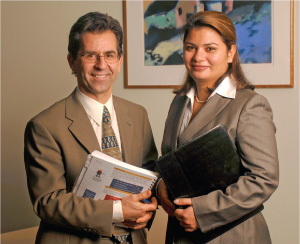Contribute
| 21st-Century Trend: Will Single-Family Homes Become Multi-Generational? |
Sangita Joshi and Richard Belofsky
08/02/2012
“Junior’s living in the basement. Mom and Dad put a tenant in the garage. And now Grandma’s moving in.â€
Wall Street Journal, July 19, 2012
According to Harvard’s Joint Center for Housing Studies, more than half of America’s detached single-family homes are located in the suburbs. Designed for baby boomers, these subdivision properties offered each family its own 20th-century manor: a ranch or two-story colonial “castle,†with an attached garage, and landscaping to maintain.
Of course, the baby boomers are now approaching retirement, and some are beginning to agree with the observations of Glenn Ruffenbach in a September 19, 2009, article “Making Suburbia More Livableâ€:
The nation's sprawling suburbs may have been a good place to grow up. But they are proving a tough place to grow old. Indeed, as the country ages, suburbia's widely assumed benefits—privacy, elbow room, affordability—tend to vanish. Maintaining yards and homes requires more effort; driving everywhere, and for everything, becomes expensive and, eventually, impossible. (Research shows that men and women who reach their 70s, on average, outlive their ability to drive by six and 10 years, respectively.)
In regard to living arrangements, a predominant social paradigm for the generation that preceded the baby boomers was to “downsize,†often moving from the family residence to a condominium or apartment, then perhaps to a senior-citizen community, and eventually, some form of assisted living. In anticipation of this trend expanding as boomers hit retirement, this type of housing increased, even during the economic downturn. But, in an ironic twist, it now looks as though many boomers may not want, or be able to afford this scenario. Instead, there may be a transformation of the single-family residence into something more fluid in definition and use.
Across the nation, suburban homeowners are looking to modify their existing living spaces – basements, garages, even bedrooms – to accommodate parents, adult children and even tenants, living on the same property. This sometimes means adding kitchens and bathrooms, creating separate entries, adding parking. And often these changes in building structure and living arrangements are bumping up against homeowner association by-laws and community zoning codes, which must decide how to resolve the issue of “accessory units.â€
The rise of homeowners seeking to reshape their suburban castles is associated with three factors. First, many older homeowners don’t want to move. In a 2009 AARP survey, 85% of surveyed individuals age 50-plus said they wished to remain in their communities for as long as possible. Second, because of depressed housing values, many homeowners couldn’t leave if they wanted to. They either don’t have enough equity in their present property or would not receive enough cash from a sale to make a move financially feasible. And third, their children may need a place to live. One of five college graduates, ages 25 to 34, is living with his or her parents, according to the Pew Research Center.
In general, economic planners find it desirable for communities to consist of a healthy demographic mix – such as singles, young families, established professionals, seniors. Allowing for accessory units in single-family homes may help preserve these demographics, but can also introduce other challenges, such as taxing the capacity of local utilities, inadequate parking, and upsetting the child-friendly dynamic many suburbs were intended to provide.
In previous generations, the “exit strategy†for the single-family home in the suburbs was to sell it. As new economic and social realities may make this option less likely or desirable, households may be compelled to adjust their financial plans as well. Instead of paying off the mortgage, it might be time to take a home equity loan. Having a tenant could impact cash flow and taxation. Instead of something to shed, the single-family residence could end up being a big part of someone’s inheritance. In fact, some builders are already responding to this developing trend. One company mentioned in the June 19, 2012, WSJ article is offering new models featuring “a home within a home†comprised of separate living units attached to a main house.
If your residence has an “accessory unit†in its future, it may impact your larger financial picture – meaning your retirement, your estate plans, even long-term care. This is a trend worth watching.
You may also access this article through our web-site http://www.lokvani.com/
